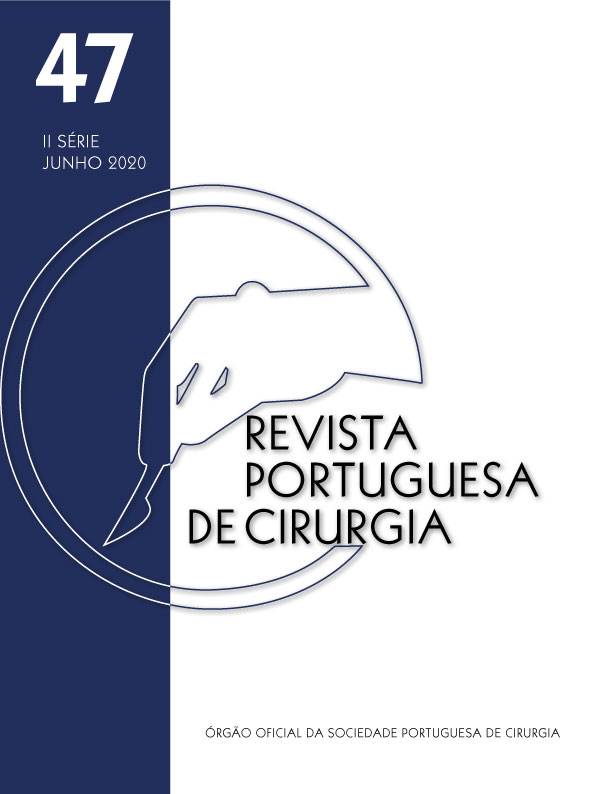THORACOSCOPIC ENUCLEATION OF A SUBMUCOSAL ESOPHAGEAL LIPOMA
DOI:
https://doi.org/10.34635/rpc.811Abstract
Aims: case-report of a toracoscopic enucleation of esophageal lipoma. Lipomas of the gastrointestinal tract are rare, and those of the esophagus are extremely rare. Surgical enucleation is indicated in case of symptoms or an unclear diagnosis. Toracoscopic enucleation has been developed as a preferred approach for most lesions in recent years.
Methods: clinical data collected from computerized records of the patient process and records, video and photography from surgery. Literature review about this subject, using Pubmed search platform.
Results: The patient is a 68 years old man, diabetic and hypertensive, presented with dysphagia associated with extrinsic compression impactation. Upper gastrointestinal endoscopy revealed a submucosal space-occupying mass, with normal mucosa, at 22cm from upper dental arch. CT revealed an uppermedium 42x9x16 esophageal lipoma, with mass effect and luminal narrowing. In April 2016, the patient was submitted to a toracoscopic enucleation of the esophageal lipoma. The tumor location was identified, and the overlying muscle layer of the esophagus was incised to expose the tumor, which was completely enucleated. The surgery and post-operative period was uneventful. Histology confirmed the diagnosis of lipoma, comprising a collection of mature adipose tissue. The patient is currently asymptomatic.
Conclusions: benign tumors of the esophagus are very rare. The treatment of suspected esophageal lipoma depends on tumor size and origin. Toracoscopic enucleation of esophageal lipomas is a safe, minimally invasive, and effective treatment. Although lipomas are rare in the esophagus, early diagnosis and resection should be recommended for all symptomatic cases.
Downloads
Downloads
Published
Issue
Section
License
Para permitir ao editor a disseminação do trabalho do(s) autor(es) na sua máxima extensão, o(s) autor(es) deverá(ão) assinar uma Declaração de Cedência dos Direitos de Propriedade (Copyright). O acordo de transferência, (Transfer Agreement), transfere a propriedade do artigo do(s) autor(es) para a Sociedade Portuguesa de Cirurgia.
Se o artigo contiver extractos (incluindo ilustrações) de, ou for baseado no todo ou em parte em outros trabalhos com copyright (incluindo, para evitar dúvidas, material de fontes online ou de intranet), o(s) autor(es) tem(êm) de obter, dos proprietários dos respectivos copyrights, autorização escrita para reprodução desses extractos do(s) artigo(s) em todos os territórios e edições e em todos os meios de expressão e línguas. Todas os formulários de autorização devem ser fornecidos aos editores quando da entrega do artigo.




